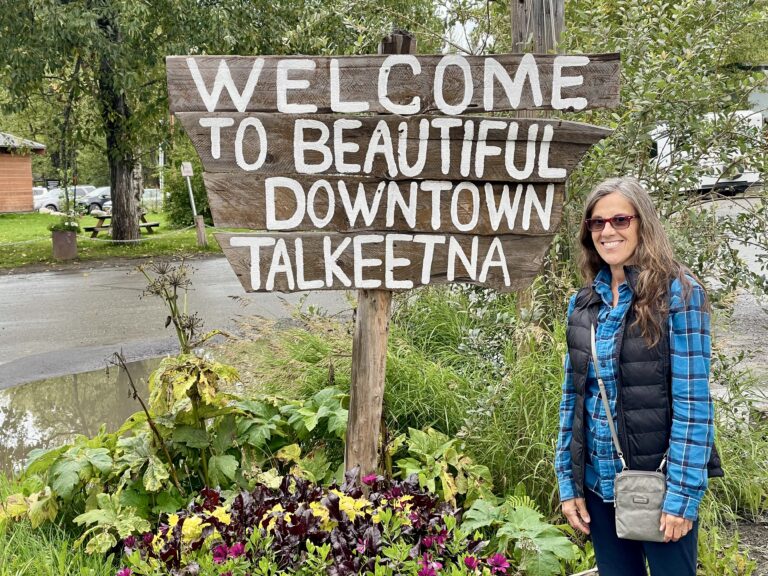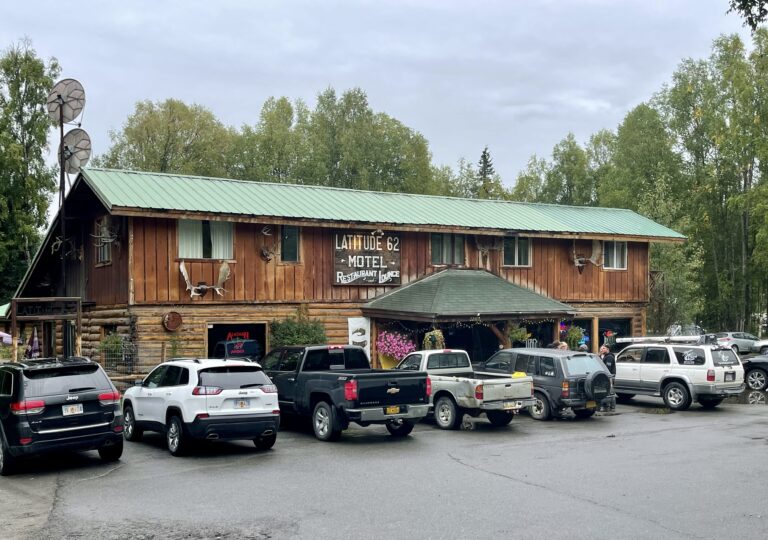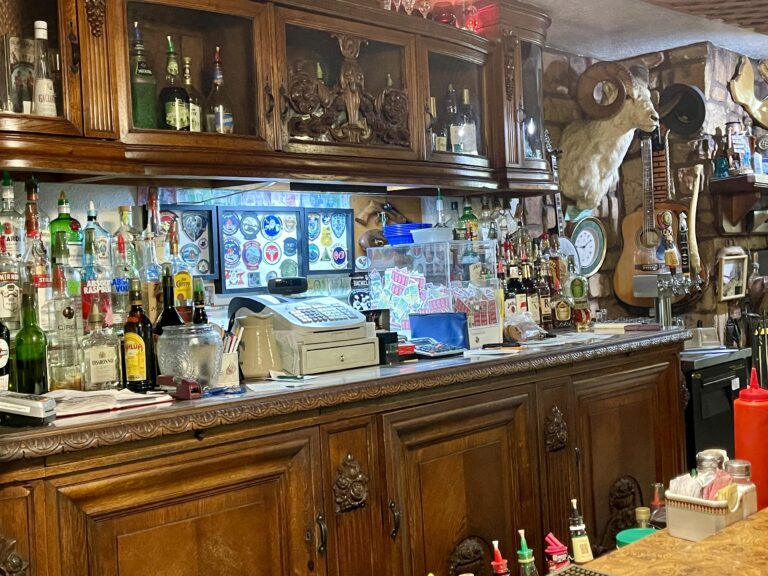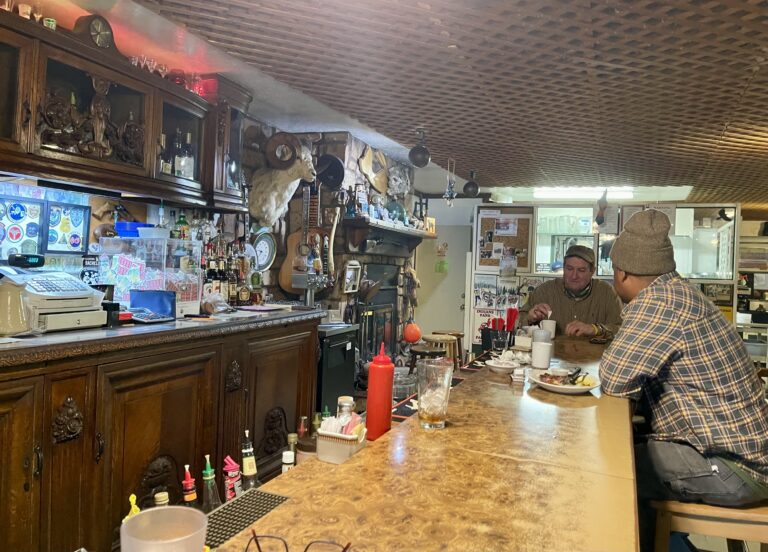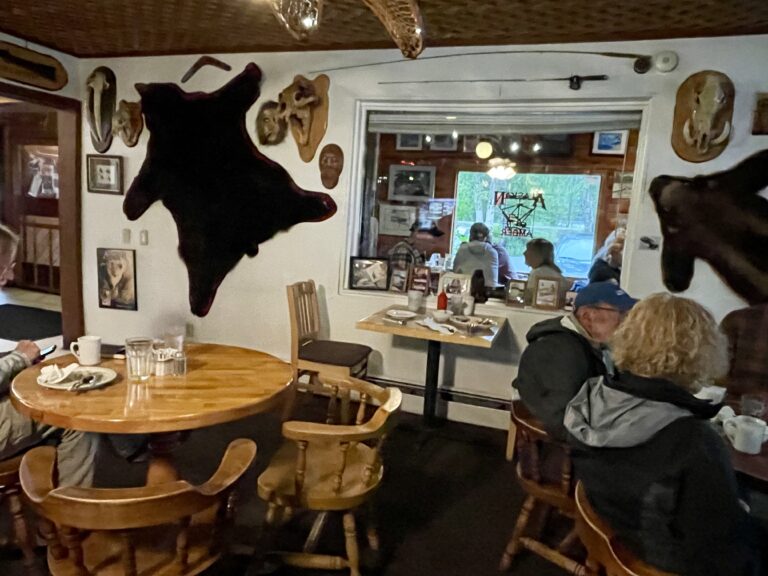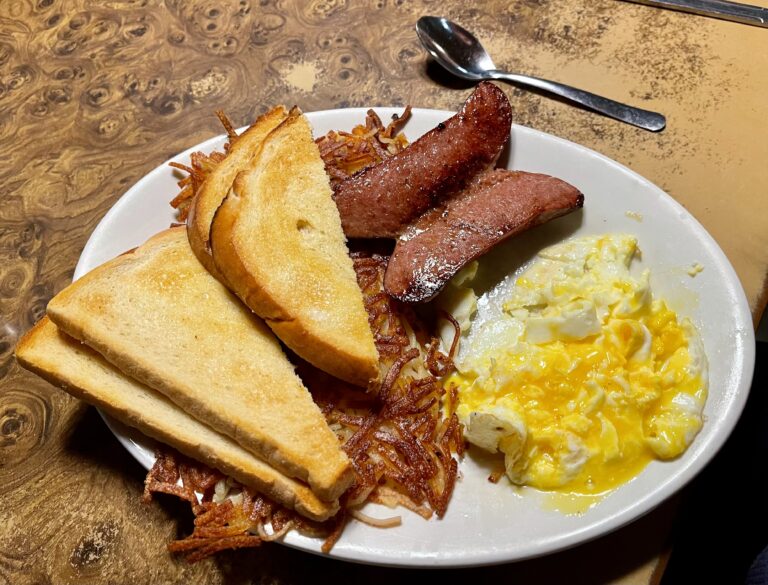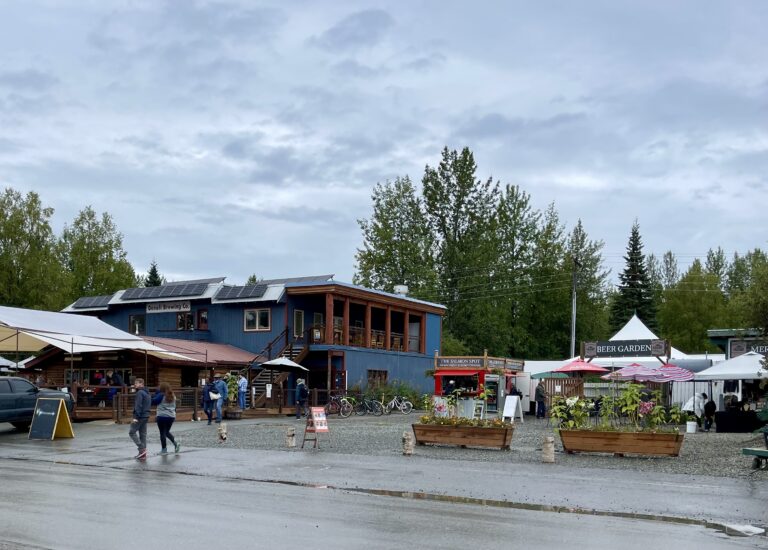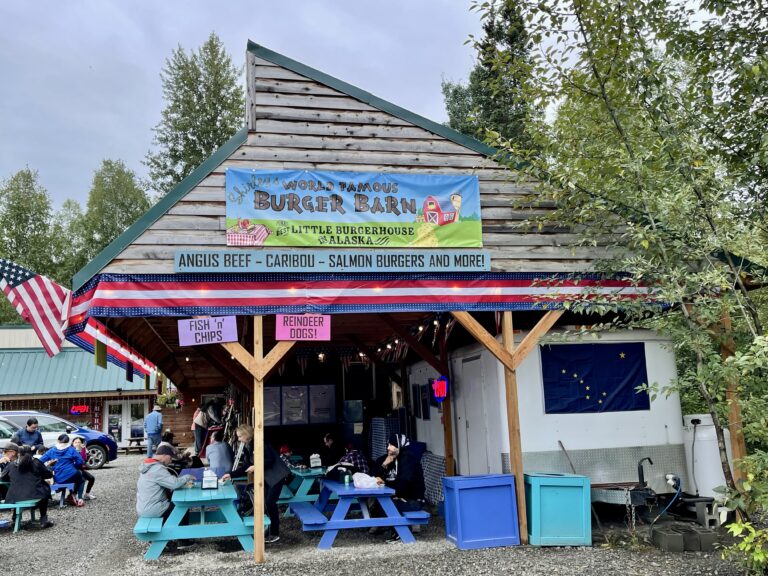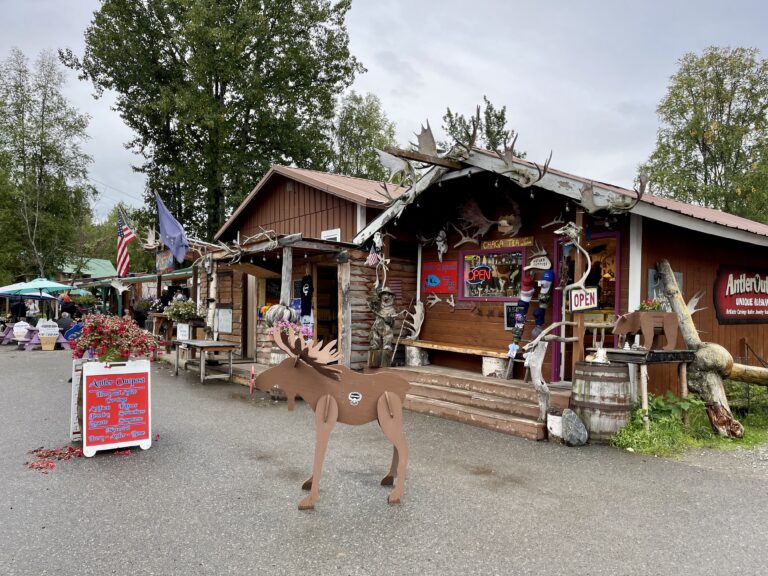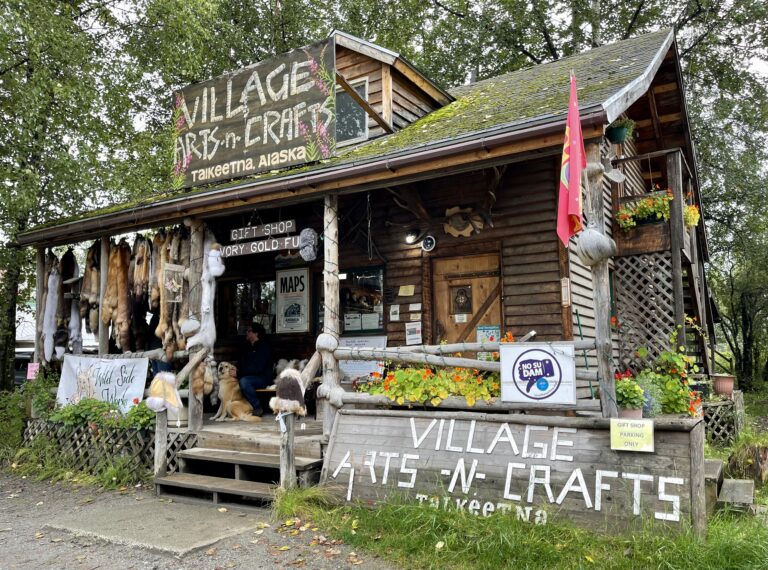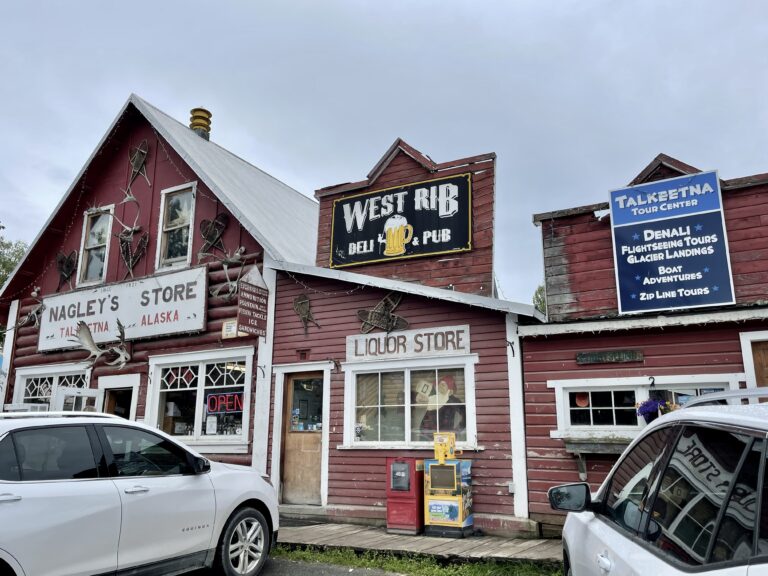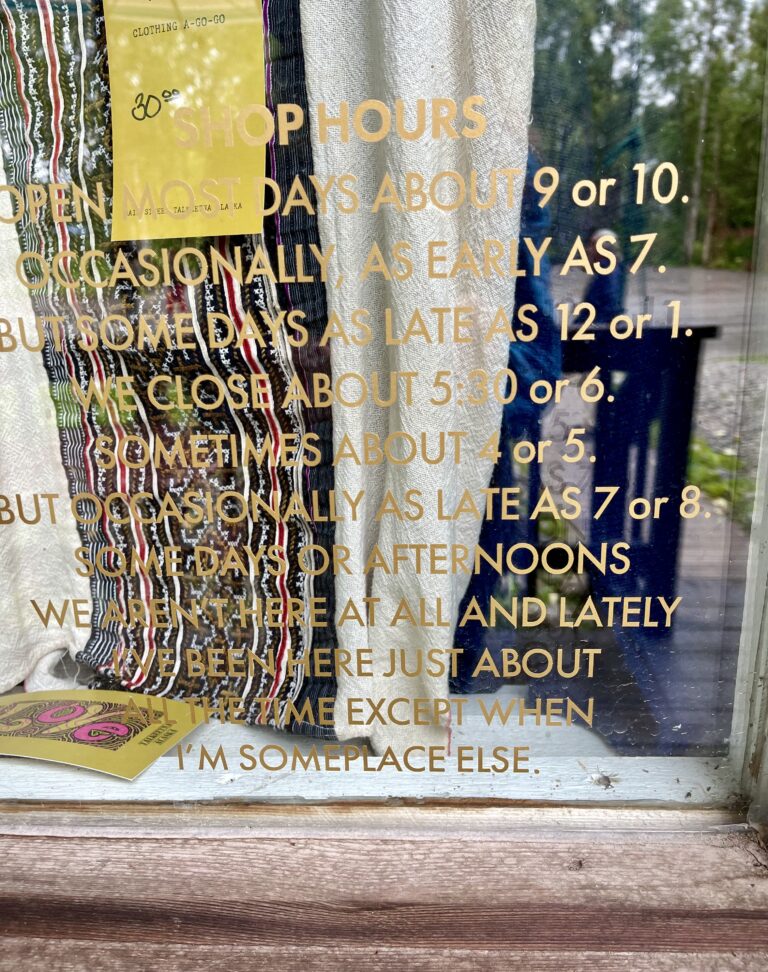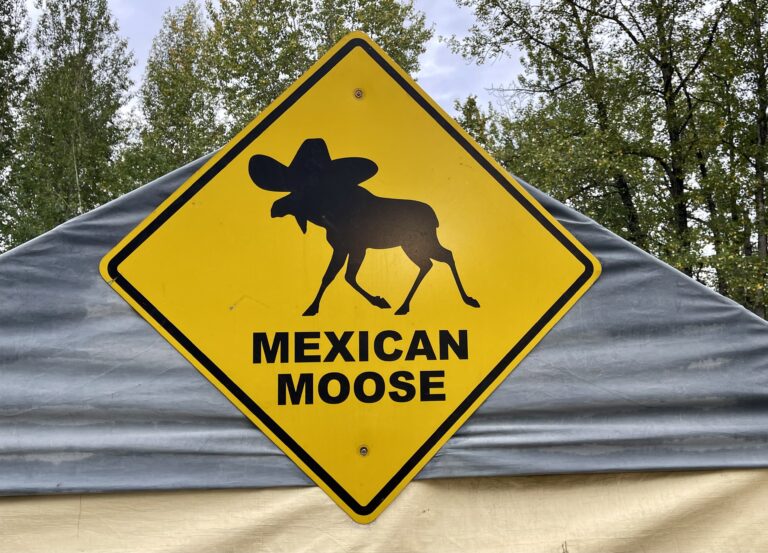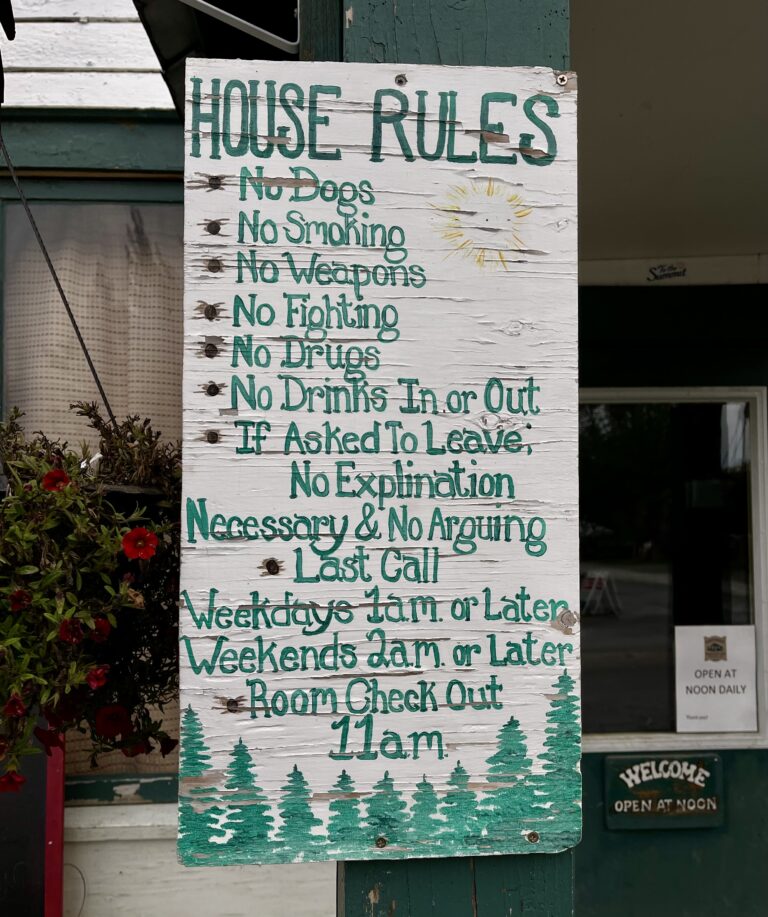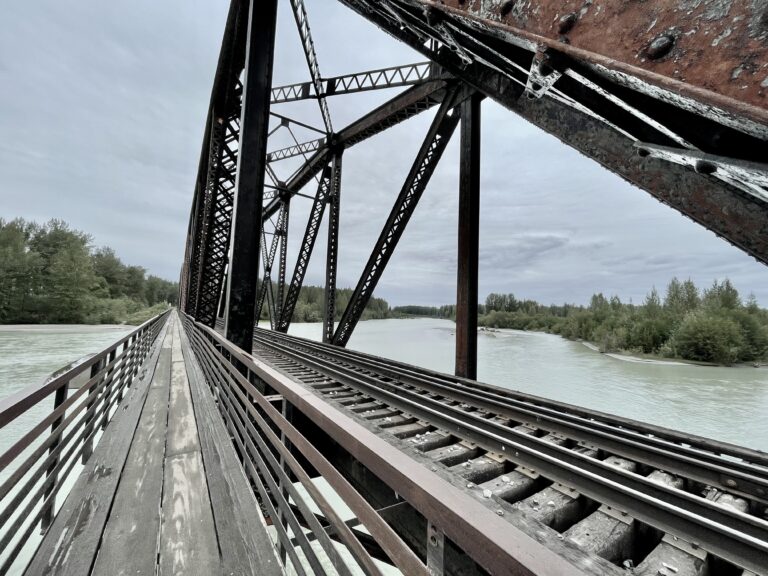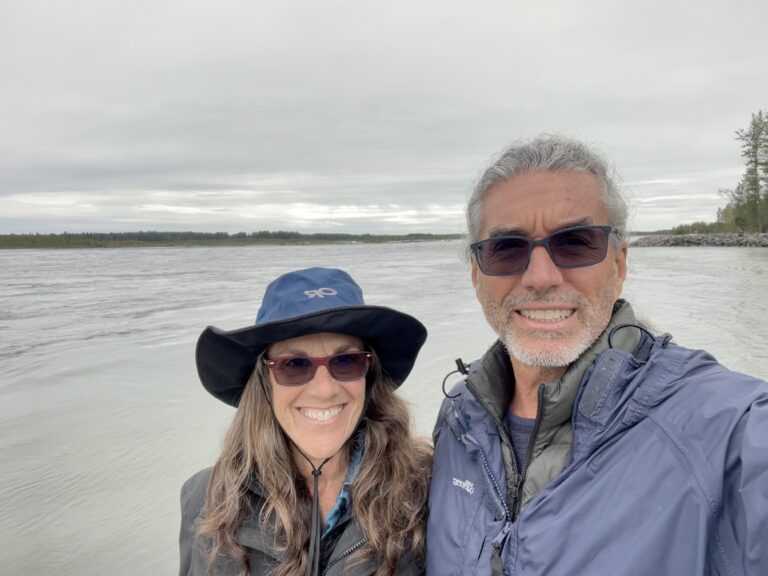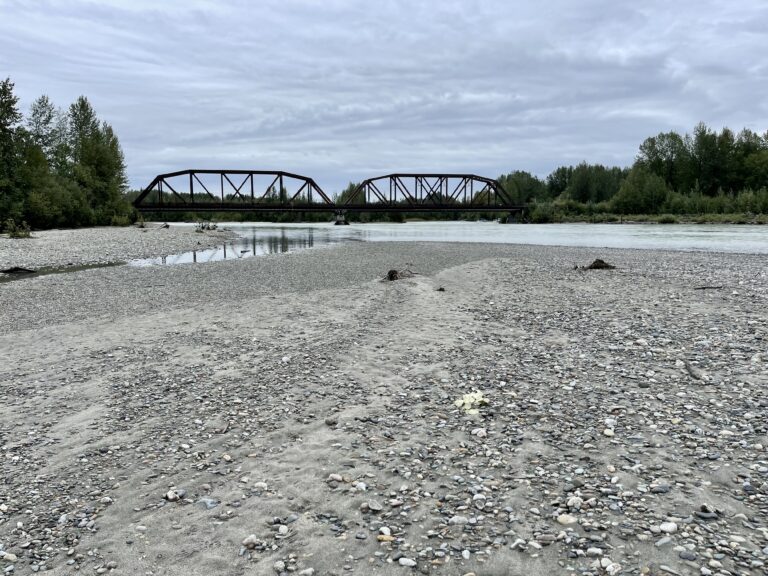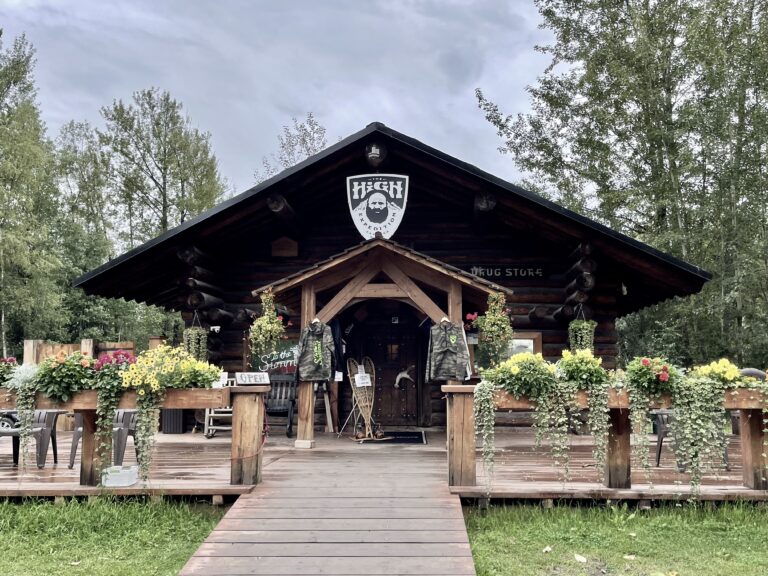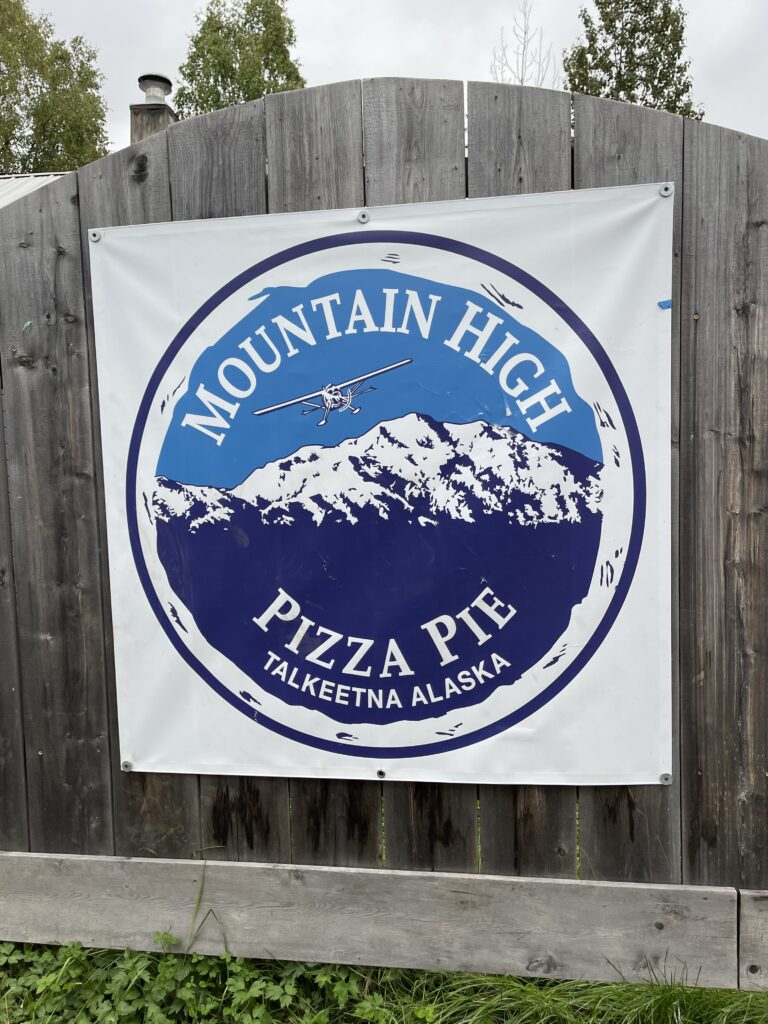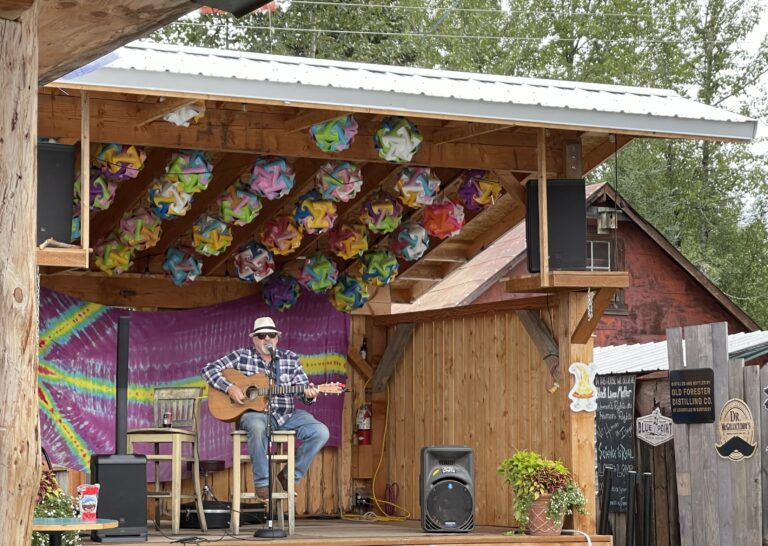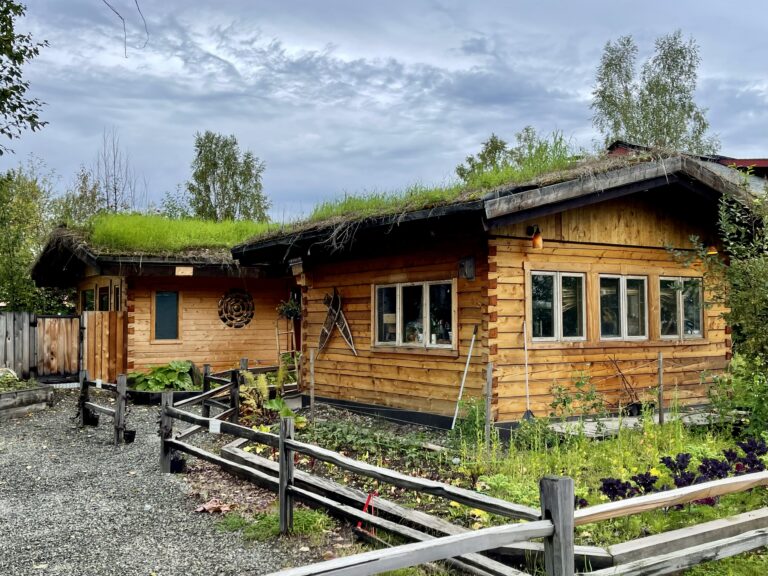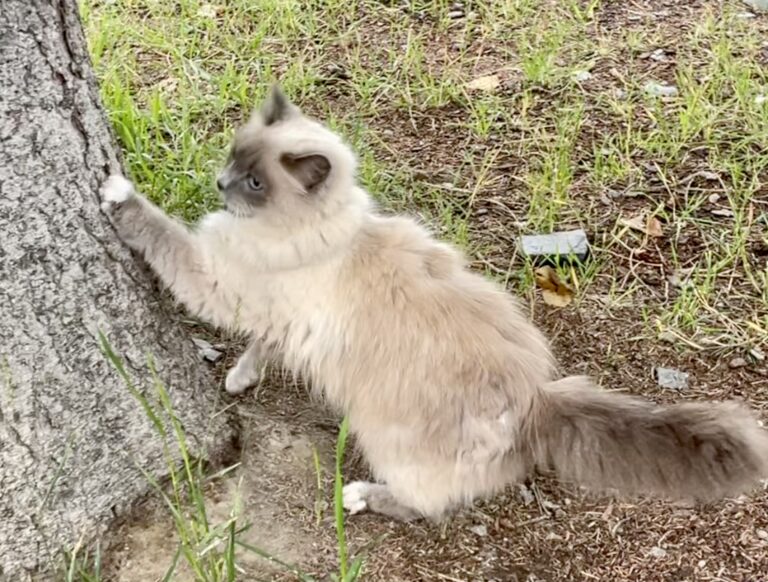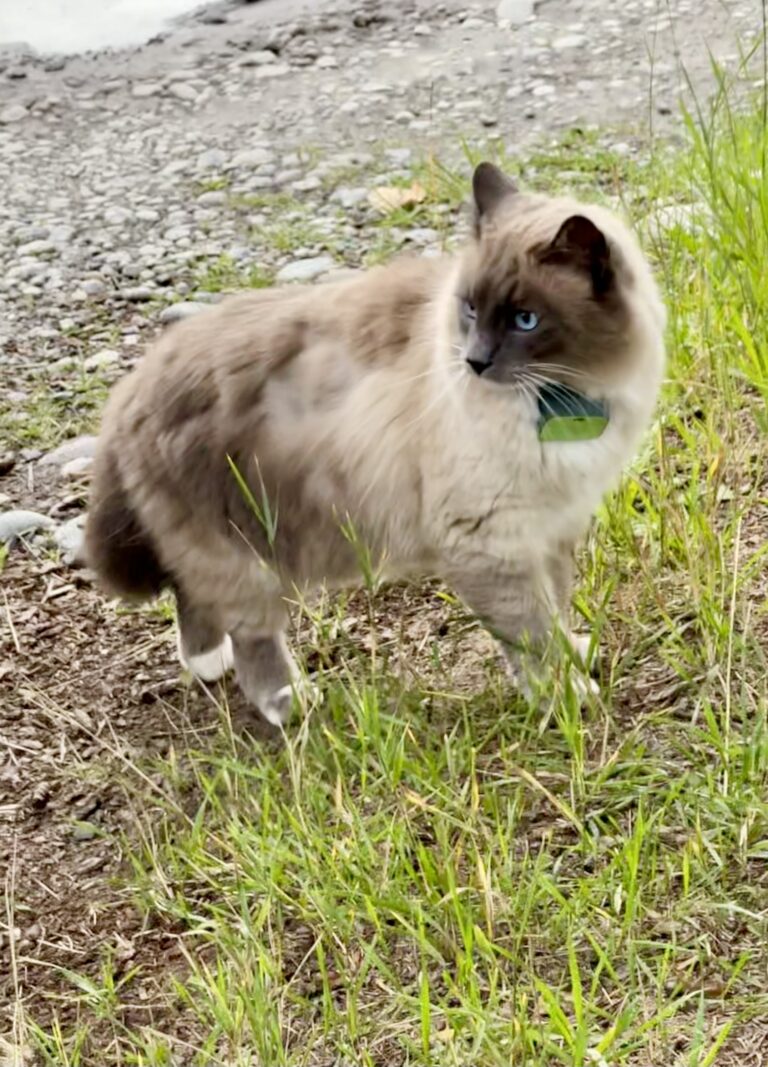August 21, 2022
Where we were camped by the Susitna River turned out to be a favorite for local fishermen and we’d forgotten how early they like to get to their favorite fishing hole. By 4:30 am (first light here) they were coming in and parking close by so we had an early start to our day. We lingered for a while trying to fall back to sleep but eventually gave up.
Talkeetna, a village of about 1,100 people, was less than an hour away to the north and our next destination and we decided to get breakfast there. It was raining lightly but the forecast showed some drier weather ahead as long as we kept heading north. So north it was.
We rolled into town and walked around in some drizzle looking for sustenance but even at 8:30 am the town was still asleep with not even coffee to be found. We learned from a friendly woman walking down the empty street that day-trippers on tour buses from Anchorage plus additional tourists on the Alaska Railroad would arrive in an hour or two and that’s when the town would wake up.
In the meantime, we’d seen a place a couple of miles away on our drive toward town that appeared to be open for breakfast so we headed back. The harried waitress said they were short-staffed but we were in no hurry. We found seats at the counter (aka bar) and enjoyed people-watching.
The customers were a combination of locals along with a few tourists who, like us, found the only open restaurant anywhere around. The walls were adorned with hunting trophies and old photographs and the heat was kept low so most customers kept their sweaters, flannels or jackets on while they ate. Eventually, Susan had decent coffee and I decided to try eggs with reindeer sausage, which to me tasted a lot like elk.
Back in Talkeetna, we’d found a small municipal campground near the end of the main street right at the edge of the tiny town that prohibited RVs so today we were just an SUV whose occupants decided to sleep in the truck. It was $20 a night and allowed us a view of visitors walking by to see the confluence of the Talkeetna, Susitna and Chulitna Rivers, 200 feet away. (Talkeetna is a Native American word meaning, appropriately, “where the rivers meet”).
It was lightly raining and the town was still quiet so after we checked into the campground, we drove a couple miles back along the road to a laundromat we’d spotted with a sad sub-50-percent washing machine operational rate and loaded up one of the working ones. There, we met Chasity, a 40-something local woman and her toothless younger brother who arrived at the laundromat via bicycle and wagon. The brother was from California but felt mostly distain for it, as many Alaskans seemed to. It must be a tough life, we thought, to not have a car in a place like this; they were obviously hardy souls and we found them likable and real.
When we returned to Talkeetna with our clean clothes, suddenly everything was opened up and hundreds of people were visiting the tiny town. Talkeetna is about 100 years old and was once the local headquarters for the Alaska Railroad.
The town is located about 15 minutes off the main Parks Highway that heads north from Anchorage to Denali National Park and on clear days (this was not one) 20,000-foot high Denali is visible from a few spots around the town. Talkeetna is considered a a jumping off point for Denali, even though the park is located a good two to three hours farther north. Talkeetna businesses offer flightseeing tours of the mountain and cater to mountain climbers on their way to summit Denali.
We found it a pleasantly quirky place. The people walking around the town seemed to be a combination of tourists, artists, hippies, outdoorsy types and hard-core mountain climbers. We felt right at home in that mix. Given that most of the people we’d met so far in Alaska were conservative, gun-totin’, California-hatin’ folks, being in Talkeetna was a breath of fresh air—even if that air was still very wet.
And it continued to drizzle, which gave the place an even more frontier feel, with muddy streets and soggy boardwalks. We wandered in and out the shops along the main street and a side street or two in town. A few stores had woodstoves inside radiating heat. T-shirts were close to $50 in some stores as the owners tried to make some money before cold weather drove the tourists away.
Signs reflected the quirkiness of the town. The store hours sign in one store window made us laugh. It read: “Shop Hours. Open most days about 9 or 10. Occasionally as early as 7. But some days as late as 12 or 1. We close about 5:30 or 6. Sometimes about 4 or 5. But occasionally as late as 7 or 8. Some days or afternoons we aren’t here at all and lately I’ve been here just about ll the time except when I’m someplace else.”
After exploring the downtown area we walked past our campground and along a muddy path parallel to the river then across a train trestle where we watched the swift milky current pass underneath. After crossing, we descended along the riverbank and wandered out on a large sandbar.
The walk eventually looped us back to the truck just as the rain picked up more. While we sat in the truck, we studied the map of Denali and planned some hikes. Susan somehow scored us a last-minute reservation for two nights in the best-located campground at Denali National Park and the weather looked okay for hiking. Cloud cover was extensive though, so we’d almost certainly not get to see the mountain’s peak. The clouds were so dense that even the flightseeing tours over the mountain (something we’d considered doing) were canceled. We figured we’d have to return another time to see the highest mountain in North America. Maybe by rail….
At some point in the late afternoon—hard to say when that was since the daylight stretched on endlessly—Susan commented that weed is legal in Alaska and maybe we should have stopped at a dispensary back in Anchorage because wouldn’t a couple of hits off a joint be perfect right now? She jokingly said to her phone “Hey Siri, where’s there a cannabis dispensary near me?” We didn’t even know the signal was strong enough for Siri to respond so we both were surprised when Siri said “There’s a dispensary 150 feet away from you.”
We looked at each other, dumbfounded, grabbed our umbrellas and walked across the street. Sure enough, there was a small building housing a shop called “High Expedition” with gear and a sign that said “To the Summit” along with snowshoes, ski poles and boots so naturally we’d assumed the shop catered to mountain-climbing adventurers. Nope.
Dinner in Talkeetna that night was a great pizza at Mountain High Pizza Pie where we also enjoyed some really good Alaskan Amber beer. We sat bundled up at the table—all the tables were outdoors in a beer garden—and enjoyed live music. We were mostly warm enough. By now, the day-tripping tourists had mostly gone and the atmosphere was more laid back. At the adjacent table, half a dozen very athletic twenty-something men ate large plates of food and we figured they were loading up on calories before a Denali climbing expedition.
The rain finally stopped so after dinner we took another walk through the town, admiring the old buildings and some Hobbit-like houses with sod roofs. Once the rain stopped the cats came out too. Lots of cats. We later learned that Talkeetna not only is known for its cats but the town mayor for twenty years was a cat named Stubbs, until he died in 2017.
Darkness came at just before 11 pm and because it would be light again before 5 am, a full night’s sleep would be tough in the truck.

